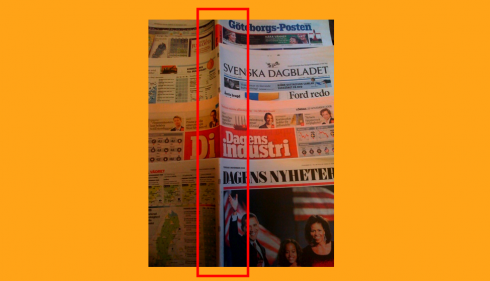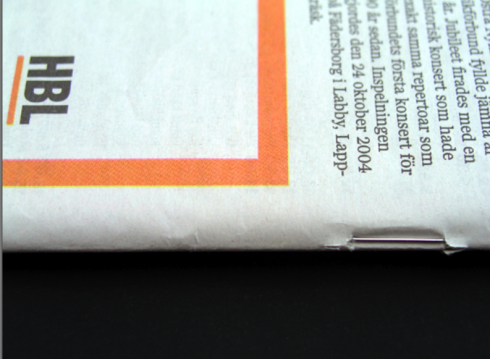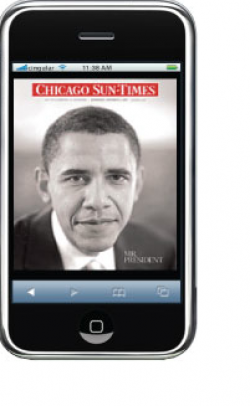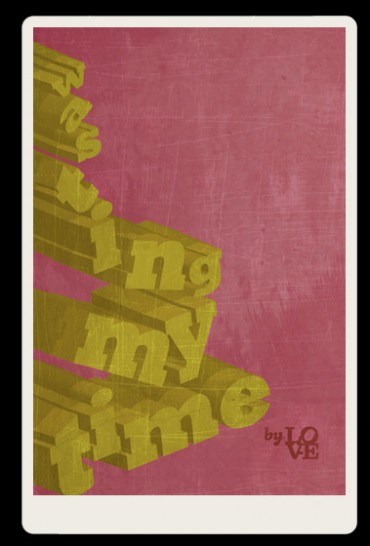

All the Scandinavian newspapers do it. The Guardian and The Times in the UK have them for some of their sections. Rarely a newspaper in the United States ever even considered it.
I am talking about the stitching of a newspaper, a practice that is relatively inexpensive, easy to implement technically, and which definitely makes the life of the reader happy. Ever tried to balance a copy of your Sunday New York Times, with pages falling as you make your way from page 10 to 11?
As i spend this week in Sweden, I am suddenly aware of how neat the Swedish newspapers are, the pages all together, never falling out as one travels through the newspaper. The two stitches on the spine of the newspaper are barely visible, yet their effect is powerful.
I was discussing stitching at lunch today with one of the Goteborgs Posten editors. To him, and to most Scandinavians, stitches are as much a part of the newspaper as ink and type.
Which brings me to the point of what I have heard repeatedly in focus groups worldwide during my almost 40-year career: readers complain about ink on their fingers, and about pages that keep falling out of the newspaper. Well, don’t know how much one can do to keep ink away from the fingers or the bed sheets. But the stitches certainly solve the problem of falling pages.
Why, then, is this not a common practice, especially among U.S. newspapers, those giant broadsheets that, especially on Sundays, tend to be like paper cascades in the hands of frustrated readers?
I ask Olof Aurell, a vice president at Tolerans (www.tolerans.com), one of the Swedish firms specializing in stitching: “The process is simple and quite inexpensive, and we have done stitching for newspapers around the world, but I would dare say that less than 3% of the newspapers are stitched, and few in the United States.”
Really? Only 3% of the newspapers worldwide using such a sensible way of holding their pages together? If only readers could act on their wishes and place demands in front of puiblishers, I am sure this number would be much higher.
I confessed to Olof that I have never been involved in a discussion of stitching in any of the more than 500 newspaper companies for whom I have served as a consultant. “It is a sort of non-event with most editors and publishers,” I tell him, much to his surprise.
Why should it be “an event”?
Well, consider the following benefits of stitching of your newspaper:
1. Makes the life of readers easier, as pages will not fall. Stitching actually gives newspapers more of a magazine feel.
2. Holds your advertising supplements together better:
Increase advertising revenue
3. Allows those supplements with a shelf life beyond one day to last longer periods.
4. In markets where several readers read one copy of the newspaper, as in India and Latin America, for example, stitching guarantees that the newspaper will travel better from one reader to the next.
5. Reduces littering, which is especially applicable to metropolitan areas where commuters read free newspapers on the trains and leave them there. Easier to pick up a one piece newspaper, that several pages flying around. Ever travelled in the New York City subway system?
Perhaps stitching is not at the top of the priority list for most publishers and editors I know, especially during these difficult economic times. However, it is now that many readers, hard pressed by the difficult financial times, begin to ponder why they need a newspaper. One that stays together could make a more convincing argument for also staying around the house.
Sort of a stitch—or two—in the nick of time.
Designer Ally Palmer chimes in on stitching

Stitching also has a fan in designer Ally Palmer (http://www.palmerwatson.com/) who sends image of one of his projects, complete with a stitch. This is what Ally writes:
It’s something I’ve tried my best to campaign for wherever I go. Such a simple but effective thing. I’ve attached a picture of Finnish paper we worked with a few years ago. I’m sure you’ve also seen the way Danish broadsheets have been glueing their papers for many years. An even better way of holding the pages together, though with only two broadsheets left here, that method may soon disappear.
Aim, shoot, get published
Bild, Germany’s largest circulation newspaper (3.3. million copies sold daily), wants to expand its photography department, but not by increasing its payroll.
So, with the help of grocery chain Lidl, it will sell a small digital camera that users can utilize to become instant photo journalists. This, of course, is angering some professional journalists organizations in Germany, which see this as a threat to their ranks.
Citizen journalism, however, is on the rise and here to stay. We all have witnessed the role of amateur photographers and videographers, most recently during the Mumbai attacks in India, when many of the images shown in the media came from ordinary citizens who just happened to be in the wrong place at the right time.
In a society where reality shows hold their own and score high ratings worldwide, why not make everyone a journalist as well. CNN devotes its own website to what it calls iReport, where viewers contribute videos, photographs and reports.
It is sort of iReport, iPhotograph, therefore iAMajournalist.
![]()
http://www.tolerans.com
http://www.ireport.com/index.jspa
http://www.printingtalk.com/news/fag/fag110.html
– German tabloid hopes camera offer in Lidl will widen exposure
http://www.guardian.co.uk/world/2008/dec/04/germany-pressandpublishing
http://www.iht.com/articles/ap/2008/12/03/europe/EU-Germany-Citizen-Photographers.php
The mobile Obama front page
For those who really want the ultimate “always with me” keepsake of an Obama victory front page, the Chicago Sun Times offers its Mr. President Nov. 5 page one to go on your mobile phone. More about mobile phone “art” in the Rodrigo Fino blog in Spanish, see below.

Go here:
http://www.suntimes.com/news/politics/obama/1296273,obama-front-page-mobile-phone-download-112408.article

To read TheRodrigoFino blog, in Spanish, go:
https://garciamedia.com/latinamerica/blog/
Today, Rodrigo Fino writes about “mobile art” and how today art and technology can converge, right in the palm of your hand, as you bring a message that suits you to the screen of your mobile telephone.

Wasting time, LOV-E

For porno use only, Beto Shibata
![]()
In Goteborg, Sweden, where I work with the team from the Goteborgs Posten as we prepare to discuss the “weekend” newspaper the rest of this week.
TheMarioBlog posting #148